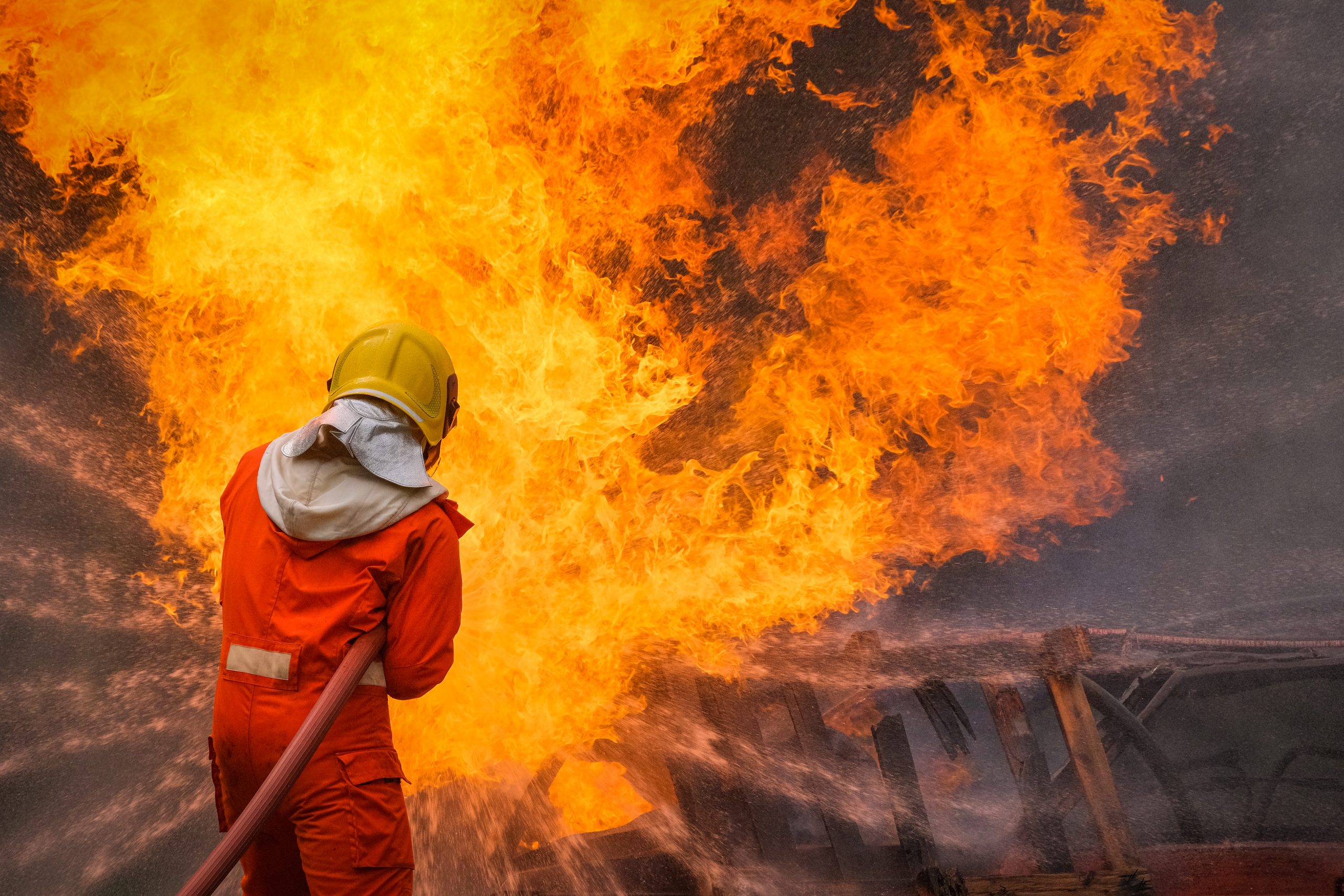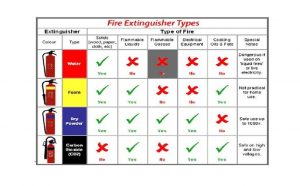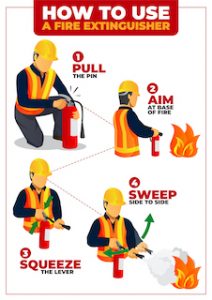
 Health and safety on construction sites has vastly improved over the past decade but one area that is still a concern for many is the risk of injury, death and property damage caused by fire.
Health and safety on construction sites has vastly improved over the past decade but one area that is still a concern for many is the risk of injury, death and property damage caused by fire.Looking at the last five years, fires on construction sites have increased overall by 9.6%.
The good news is that over the last two years the numbers have started to come down – from 410 fires during 2017-18 to 265 fires during 2018-19 – but that means there’s still one for every day of the year!
Last Autumn, we published a blog about this issue which looked at some of the common ignition risks, fuel hazards and how to prepare for emergencies.
Having just issued a new Toolbox Talk training on fire safety we’re reviving this important topic in the Sheriff’s blog this week, focusing this time on how to reduce the risks and what information you’ll need to know before ever attempting to fight a fire.
First things first
In the event of a fire emergency, call The UK’s FIRE & RESCUE SERVICE (FRS) by dialling 999. Do not attempt to tackle an out-of-control fire as this could put you and others around you at risk.
What starts a fire?

So, technically the answer to that question could be ‘people’ – either accidentally through bad practices or deliberately (around 37% of fires in construction are started deliberately). However, in either case there are three things that the fire needs to get started – a fuel type, oxygen and heat.
- Fuel – something that will burn, e.g. dry waste, packing materials or furnishings.
- Oxygen – found in the atmosphere, e.g. natural airflow through doors and windows or from air-conditioning systems.
- Heat – a source of ignition, e.g. faulty or misused electrical equipment.
Reduce the risk
Carrying out training and thorough risk assessments are both key to reducing the risk of fire in construction. It’s also really important to remember that a fire needs all three of the components mentioned above (fire, oxygen and heat) so a big part of preventing a fire is making sure these three things do not exist in close proximity.
Use this checklist to reduce the risk:
- Prepare an emergency plan.
- DO NOT overload circuits or use damaged cords.
- DO NOT place hot equipment near flammable materials (e.g. space heaters near
- paper).
- Keep gas and solvents away from sources of ignition and clean up spills immediately.
- DO NOT smoke in prohibited areas (this generally means do not smoke within the boundaries of any construction site).
- Dispose of used cigarettes and matches properly.
- Keep work areas free of dust and lint and dispose of trash properly.
- Whenever possible, use non-flammable chemicals for cleaning.
- DO NOT overload electric sockets – ‘one socket, one plug’.
- Keep all fire doors closed and clear for emergency evacuation.
- Ensure you are familiar with your emergency procedure for fire safety.
- If you identify an electrical appliance which has not been tested or has expired, remove it from use and report it to your supervisor.
- Provide training for all site workers.
- Identify people in and around the site who may be especially at risk.
Fire fighting
Most construction sites will have fire extinguishers to hand but it’s extremely important to note that these are only suitable for use on small relatively contained fires (not for fires that are out of control). It’s also crucial to know which type of extinguisher to use in different situations and, of course, how to actually use it!
Types of extinguishers
All fire extinguishers are red but have panels of different colours to indicate their contents as shown in this image.


NEVER use WATER on ELECTRICAL or FLAMMABLE LIQUID FIRES.
NEVER use FOAM on ELECTRICAL FIRES.
REMOVE USED or PARTLY USED extinguishers from service and report them to your
supervisor so they can be replaced promptly.
IF POSSIBLE, position extinguishers near entrances and exits.

How to use a fire extinguisher
- Pull the pin at the top of the extinguisher. This pin will release the lock and allow you to discharge the extinguishing agent.
- Aim the extinguisher at the base of the fire. Aiming at the flames will cause the flames to blow around, allow it to spread and cause even more damage.
- Squeeze the lever on the fire extinguisher slowly. This will release the extinguishing agent.
- Sweep with a side to side motion.

Your safety comes first
To ensure you have the best chance of staying safe during a fire situation, make sure you know:
- Your part in the fire safety plan.
- Where extinguishers are.
- What type they are and how to use them (do not use one unless you are certain you know how to do so safely).
- The evacuation procedure and the escape routes.
- The site alarm arrangements (e.g. a bell, siren, air horn or a verbal shout).
And finally…
DO your fire risk assessments regularly.
DO make changes were necessary.
DO NOT be the site that has to deal with a fire today.
DO NOT forget you have family and friends waiting for you.
10.03.2020
Image source: Freepik (main image) plus fire safety materials.








